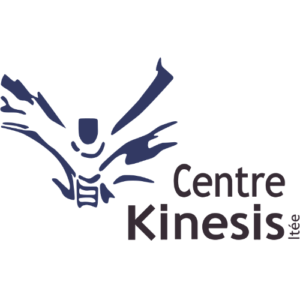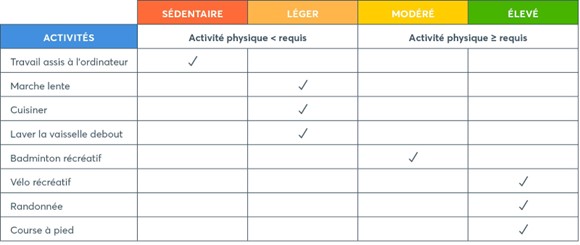Sedentary lifestyle: tips and tricks to move more!
What is a sedentary lifestyle?
You might think that sedentary behavior is spending your days sitting in front of the TV. This image we have of a sedentary lifestyle is partly true, but only partly. In reality, there are more factors to consider. Physical inactivity is the total or partial absence of physical activity.
Can one be a sedentary asset?
Yes it is possible, since physical inactivity and a sedentary lifestyle are two different behaviors. Example: If every day, you work in the office from 9 a.m. to 17 p.m., then go to do 1 hour of sport and finally you spend the rest of the evening watching TV or writing reports… You are then a sedentary asset!
Frequent consequences of a sedentary lifestyle
- Stress and/or muscle contractions.
- Pain, discomfort and reduced joint mobility.
- Risks of developing or worsening obesity problems
According to the Montreal Heart Institute 3, physical inactivity would increase the risk of developing or worsening chronic diseases such as heart failure, cardiovascular disease, stroke, type 2 diabetes, hypertension, certain cancers and osteoporosis.
TIPS AND TRICKS
Sources of motivation!
- Maintain or improve our mobility
- Maintain or improve our flexibility
- Improve the quality of our sleep
- Improve our mood
- Reduce pain due to prolonged static positions
- have more energy
Reduce sedentary behavior!
- At home or in the office, get up and move every 30 minutes
- When possible, get up to talk on the phone
- During your coffee break, drink your drink standing up
- go for a walk during your breaks
- When possible, visit your colleagues at their desks rather than emailing them
- If you are in charge of a meeting, conference or training, plan for short breaks so that everyone can get up and move regularly.
Massage therapy-kinesitherapy!
The massage sessions (relaxation or sports) or physiotherapy allow a release of muscle tension, in addition to reducing the effects of stress on the body. They also allowimprove flexibility and reduce joint stress. They promote same blood and lymphatic circulation. In addition, they will also allow set the body in motion, either actively or passively, depending on the client's needs and physical condition.
Massage therapy can also help with the resumption of physical activities by softening the muscles and allowing to gain more range of motion in the joints.
In short
- Avoid prolonged sitting or lying
- Get up and move regularly, ideally every 30 minutes
- Go for a walk everyday with children, family, friends or the dog.
- Tryadd an additional activity to do a few times a week. However, we want this activity to be a little more intense, such as brisk walking, jogging, cycling or swimming. It doesn't have to be complicated or expensive. The more the activity is pleasant and easily accessible, the more we will want to continue it in the long term.
- Put your activities in your diary, it's as important as the doctor's appointment.
- Schedule regular massage therapy sessions. This will relax your body and mind. These sessions will help keep your muscles and joints flexible.
Source Blog RMPQ
Géraldine Gallard Masso-Physiotherapist



